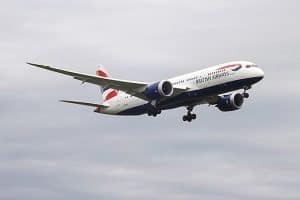
As regional airports continue to face challenges related to their growth and success, what impact have new aircraft had on their operating model?
There is a massive increasing demand for regional airports from passengers. The convenience of having an airport closer to home, as well as the attractive pricing of low budget airlines and the expansion of routes, have allowed regional airports to increase their market share worldwide. But what’s next for regional airports, and how has the new aircraft being introduced affected them?
New, efficient, long range Aircraft
The Boeing 787 Dreamliner and the Airbus 350 are similar aircraft. They are both long range, wide-bodied and twin-engined, as well as being constructed extensively from carbon fibre reinforced polymer (CFRP). With their passenger capacity, flexibility and long range, as well as their saving in fuel costs, they are extremely cost effective to airlines.
They are also appealing to regional airports, as they can fly the distance of B747/A380 aircraft but with smaller passenger numbers. It has been said that no aircraft in history has been able to fly as few passengers as far as the 787 can or as efficiently. This can therefore open up new, previously impossible, routes such as Hyderabad, Ho Chi Min and Buenos Aires.
This is crucial for regional airports, as they can now sell more tickets for direct routes with aircraft that can fly these distances efficiently and economically. They do not need to be a hub to service these routes, effectively changing the entire structure of the hub and spoke transfer model of air travel. Indeed, the new planes have been nicknamed ‘hub busters’ and are reducing the scale of passenger demand needed to make long haul routes viable, possibly even encouraging airlines to bypass hub airports to serve direct connections.
What do regional airports need to consider?
The B787 and the A350 have changed what regional airports can offer their passengers. However, regional airports now have to deal with more complexities in terms of scheduling, demand, passenger numbers and expectations. Are they prepared for these changes?
We have been working with regional airports such as Gatwick and Manchester, to increase capacity and efficiency within their terminals. For example, in Manchester we were asked to look at how to improve capacity, reducing investment costs to a minimum and providing cost efficient options for how Manchester Airport can manage growth, new entrants and the expansion of airlines as a partial result of the possibilities the new aircraft have created. As a result of our work with the regional airport we improved passenger experience and increased capacity and flexibility.
We can help innovate future regional airports with our knowledge of the demands and differences of these different aircraft. Our technology and tools, particularly our bespoke simulation modelling tool, TransvisionAiR™ allows passenger flows, capacity issues and different customer and aircraft specifications to be mapped and modelled. This allows our clients to visualise potential problems before changes are put in place and our knowledge assists them in coming to solutions that work effectively and efficiently within their regional airport.
Image Source: By Mark Harkin (G-ZBJB Boeing 787 Dreamliner British Airways) [CC BY 2.0 (http://creativecommons.org/licenses/by/2.0)], via Wikimedia Commons

